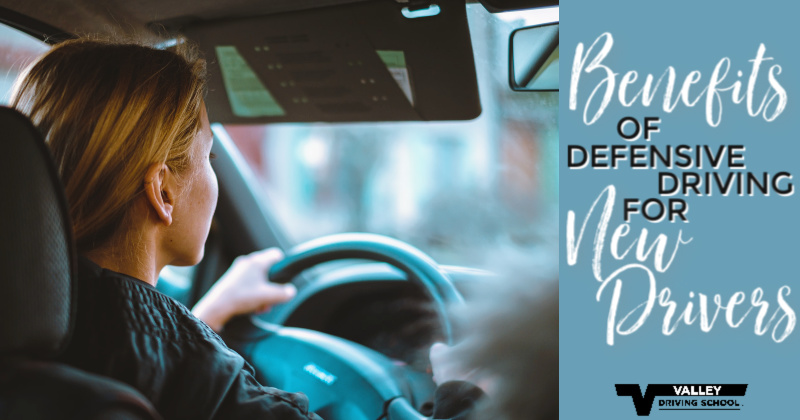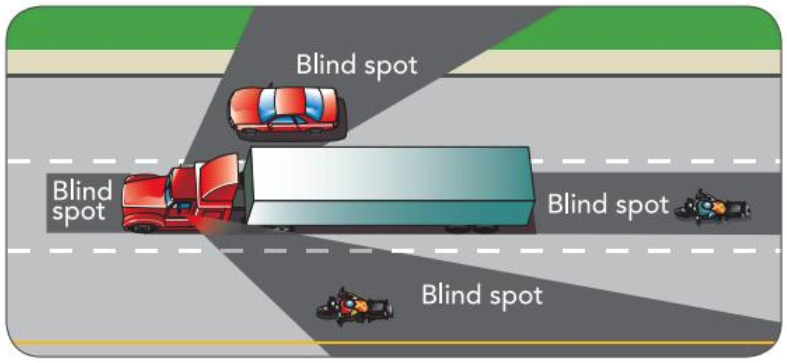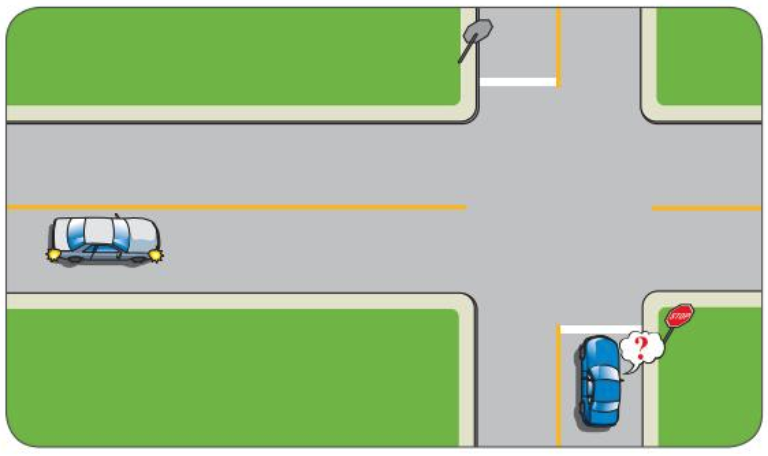The responsibility to drive defensively rests with drivers in British Columbia but, what does it really mean to be a defensive driver? Defensive driving goes beyond just following the rules of the road. It means anticipating the actions of other road users and taking measures to prevent incidents and collisions on the road.

Defensive driving habits and attitudes prepares the driver for various situations, hazards, or incidents they may encounter while driving. A new driver may not have the experience that comes with years on the road, seeing a variety of scenarios, good, bad and otherwise. For a new driver, learning defensive driving techniques can help you stay safe on our roadways!
Mindset
Before you get behind the wheel, an important step to defensive driving is maintaining a clear mindset. You should be prepared to be patient, confident, and calm. Don’t operate your vehicle if you feel angry, distressed, tired, or are intoxicated by drugs or alcohol. You also need to be ready to focus all of your attention on driving. All drivers, not just new drivers, should be aware of distractions inside the vehicle that can take your attention away from the important task at hand. Changing the radio station, talking to passengers, dealing with children, and drinking/eating can impair your ability to respond quickly and appropriately when faced with a challenge on the road.

Texting and driving or talking on the phone without a hands-free device is not only dangerous – it’s illegal. If you feel tempted to use your phone while driving, place it out of reach in the trunk or back seat.
Observation
Check Ahead
Regularly observing your surroundings while driving is an important defensive driving skill. Looking well ahead by one or two city blocks, or about half a kilometre, allows drivers to prepare in advance. Scan from left to right, then back again, looking for potential hazards such as a pedestrian attempting to cross or door opening from a parked vehicle, and always staying focused on the task at hand: driving safely.
Check Behind
Rear-view and side mirrors should be checked with quick glances every 5-8 seconds, so you can remain aware of vehicles and other road users approaching from behind.
Check Beside
Sometimes other road users are positioned beside us in a “blind spot”. A blind spot is an area alongside our vehicle, either on the right or the left, which a driver may not be able to see in their mirrors.
If a driver intends to lane change, turn or pull over to the side of the road, they must complete the following to ensure the movement can be made safely:
- check the rear-view for anything approaching from behind
- check the side mirror in the direction they intend to move into
- shoulder check in the desired direction to ensure nothing is already in the area they intend to move into

Different styles of vehicles have different blind spots. Buses, large trucks and tractor-trailers pose unique risks, as their blind spots are different and larger than a typical vehicle. Although we move through other vehicle’s blind spots when driving, it is important not to stay there - make sure you can see and be seen.
It’s important to always leave extra room for these vehicles, as they typically need more space to maneuver. Pay close attention to their signal lights. Trucks may swing out into another lane to complete a turn safely. If you are following too close, or driving in their blind spot, you may be in danger of impeding their maneuver and getting hit.
A quick glance over your shoulder in the direction you want to move, called a shoulder check, along with aforementioned mirror checks should be done whenever you plan to change your direction or road position to ensure the blind spot on that side is clear. You should also complete a 360-degree check whenever backing or exiting the vehicle.
Space Margins
Tailgating, or following too closely behind the vehicle in front of you, is a leading cause of collisions in BC. In ideal conditions, maintain a two-second following distance between you and the driver in front of you. When driving at night, or in adverse driving conditions like snow or rain, on high speed roads, or on a gravel or unpaved road, increase your following distance to 3 or 4 seconds.

This gives you the opportunity to respond and stop safely if the driver ahead of you suddenly slows, swerves, brakes quickly, or even if they’re involved in a collision. When stopping at an intersection, leave enough room to give yourself an escape route. This extra room between yourself and the vehicle in front of you has another purpose as well: if the driver behind you looks like they may not be able to stop, you will have this space to move safely into, to avoid being hit from behind.
Speed
It’s important to maintain a safe and steady rate of speed as a defensive driver. Assess the conditions in which you are driving – it may not be safe to travel at the posted limit if it’s snowing, raining, or visibility is impaired by night, weather, or fog. When slowing or accelerating, maintain steady, even pressure on either your brake or accelerator. Begin slowing down early by easing off the accelerator when you see an intersection approaching that requires you to stop or yield. If you see another driver’s brake lights, adjust your speed to maintain your safe following distance and prepare for a sudden stop.
Steering
The two main principles of steering are controlling the wheel and maintaining correct road position. For maintaining the correct road position, you should always look and steer in the direction you want to go, rather than where you are at. Your hands will follow where your eyes lead. Keep both hands firmly on the outside of the wheel to maintain steering control and to keep them safe in the event of collision - they could be injured if they are inside the steering wheel.
Although you may find yourself driving with one hand sometimes - while changing gears or using a dashboard control - try to steer with two hands on the wheel whenever possible. Your hands can be positioned at various angles, as long as the positioning offers as much control as possible. If you imagine that your steering wheel is a clock, you should put your hands at an equal height, at the 9 o’clock and 3 o’clock positions, or the 10 o’clock and 2’clock position - whichever is most comfortable.
Communication
Typically drivers cannot use verbal communication with each other, so that’s why our vehicles are equipped with turn signals! Turn signals can be used to communicate to other road users that you want to change direction or position, and to alleviate confusion rather than create it. You should always use your turn signal prior to turning left or right, changing lanes, parking, or moving to and away from the side of the road. When you use turn signals, make sure to be timely and signal ahead to give road users plenty of warning but also be sure not to turn it on too soon and confuse others. Turn signals are designed to switch off after you have made a turn, however sometimes the manuever you make, such as a lane change, doesn’t require the steering wheel to turn enough to cancel the signal.

Hope for the best but prepare for the worst. A defensive driver expects another driver on the road may make a mistake or not correctly communicate intentions. If you try and predict what other road users may be doing, or any mistakes that could happen, you’ll be adequately prepared to stop, slow down, or avoid the incident to the best of your ability.
--
Being a new driver can be intimidating, but if you prepare yourself adequately, you’re setting yourself up for success! Practice driving in areas where you can build from simple maneuvers to more complex, strengthening your skills as you go. This will allow a new driver to have limited exposure while building defensive driving habits and attitudes.
